Getting the proper care and repair for your tires is an important step in ensuring not only your safety but that of the other motorists on the road. You may be wondering whether a patched tire can blow out. We have thoroughly researched this question and have found some answers.
A properly plugged and patched tire that is repaired by a professional according to the standards in place by the U.S. Tire Manufacturer's Association will usually be in danger of a blowout. The Association limits the size and location of a tire repair to avoid this possibility.
- The repair area must be smaller than 1/4 of an inch.
- The hole in the tire must be located on the tread area.
- Plug and patch the hole to avoid a blowout.
Tire repair done correctly can last a long time. We'll break down what types of repairs will last and go over when you should replace your tire. Keep reading as we discuss best practices for reliable tire repair and how you can avoid a blowout.
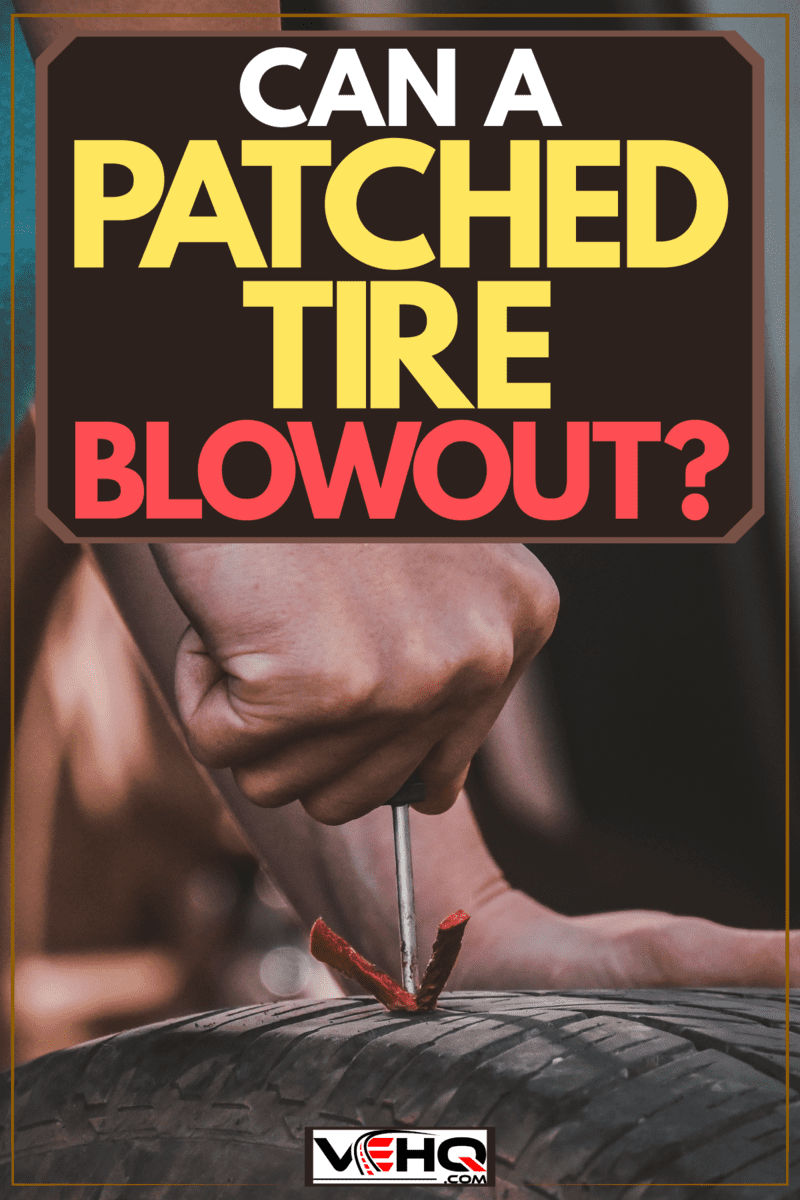
Is It Safe To Drive With A Patched Tire?
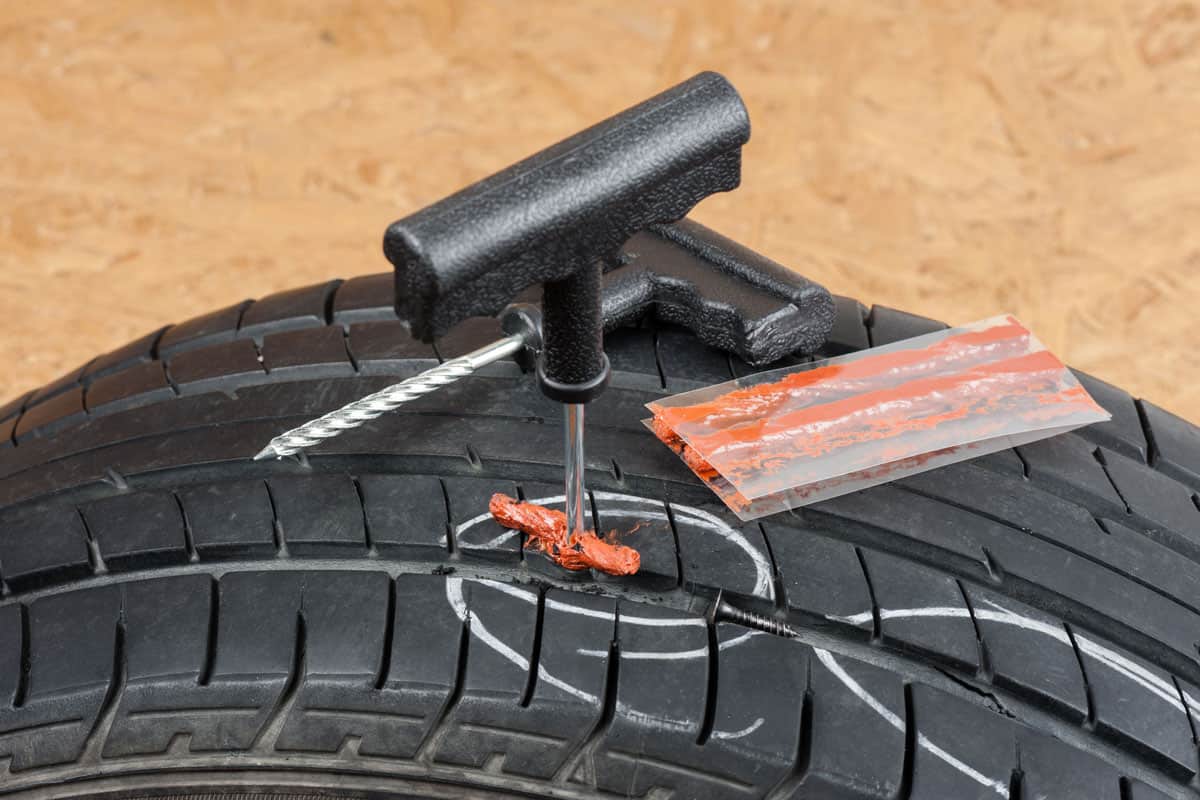
A tire that is repaired following industry guidelines is considered safe to drive on. The U.S. Tire Manufacturers Association has published recommendations and guidelines for tire repair. They outline what types of repairs should be performed and when the tire should be replaced.
The Repair Area Must Be Smaller Than 1/4 Of An Inch
Recommendations from the tire industry as well as government safety organizations indicate that the hole diameter or repair area should be less than a 1/4 of an inch across. Trying to plug or patch a larger hole will cause the tire to slowly deflate and have low pressure which can increase the risk of a blowout.
The Hole In The Tire Must Be Located On The Tread Area
The most important factor in repairing a tire may be the location. Many blowouts have been caused by repairs to the sidewall or shoulder of the vehicle. These areas are too textured and curved to adequately repair.
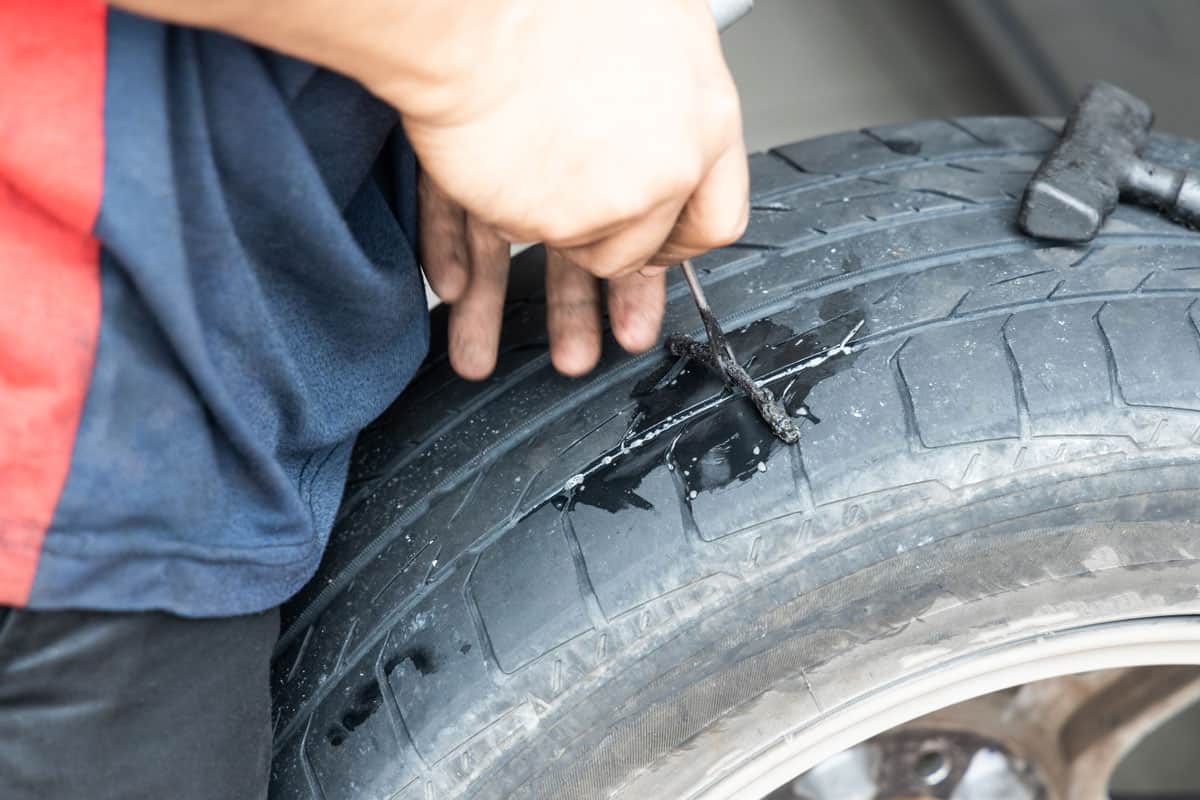
The tire should be completely removed and inspected. If the puncture is in or extends to the sidewall or shoulder of the tire, then the tire should be replaced. Often unrepairable damage is not found without completely removing the tire.
If the hole is not in the tread area a temporary emergency repair may still be applied if the car can be driven straight to the mechanic's shop within a few miles at low speeds.
Plug And Patch The Hole To Avoid A Blowout
The National Highway Traffic Safety Administration states that a repair must include both a plug and a patch to meet safety guidelines. The repair should also include a type of adhesive or cement that seals the inside of the puncture.
If you choose to have a professional repair your tire, ask them if they follow industry standards for tire repair. A plug-only or patch-only repair is not a long-term solution and does not follow DOT safety regulations. In some states, an improper repair job can cause your vehicle to fail a state inspection.
For more on what can cause your vehicle to fail inspection, see our article 16 Things That Will Fail a Car Inspection.
How Long Can You Ride On A Patched Tire?
A professionally plugged and patched tire can last anywhere from seven to 10 years or around 25,000 miles. If you repair your tire yourself or one of the commercially available kits then you may want to have the tire inspected and repaired or replaced as soon as possible.
Tires that are plugged and patched properly can be driven in normal conditions. Most experts agree as long as the vehicle is driven under 90 miles an hour, a patched tire would not cause a blowout.
Can You Repair A Tire Yourself?
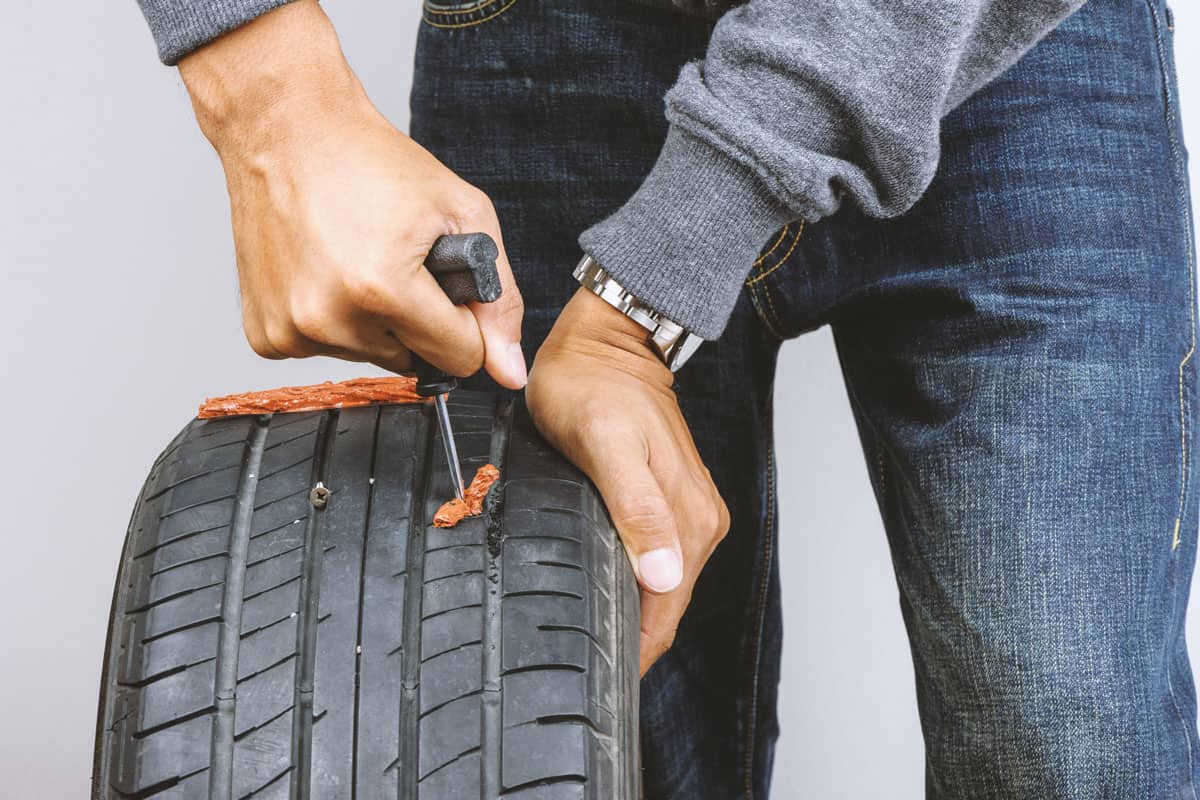
If you have the tools and some tire maintenance experience, you may be able to do the repair yourself to buy time until you can bring your vehicle in for a professional repair or tire replacement.
Many motorists that are on the road often keep a repair kit in their vehicle. A kit like the one below can be used to repair a flat tire. You may be able to use the repaired tire for up to three days or 100 miles.
Click here to see an example of a tire repair kit on Amazon.
Another low-cost option for an emergency repair would be to use a product like Fix-A-Flat. It sprays a sealant and air inside your flat tire. It can repair holes that are under a 1/4 inch in size. Drive your car up to four miles to the nearest gas station to add enough air to reach the required tire pressure.
Take your vehicle in for tire repair as soon as possible after using an emergency repair product. They are not meant for permanent repair.
Click here to see Fix-A-Flat on Amazon.
When Should You Replace A Tire?
It is important to determine the exact cause of your low tire pressure. According to state and federal regulations, certain circumstances will render the tire unrepairable and your mechanic will be obliged to advise you to replace your tire.
If your tire has gone flat due to driving conditions or wear and tear, your tire will need to be replaced. A second repair should not be performed on top of an existing repair. If your tire has already been repaired once, then it should be replaced as soon as low pressure is observed.
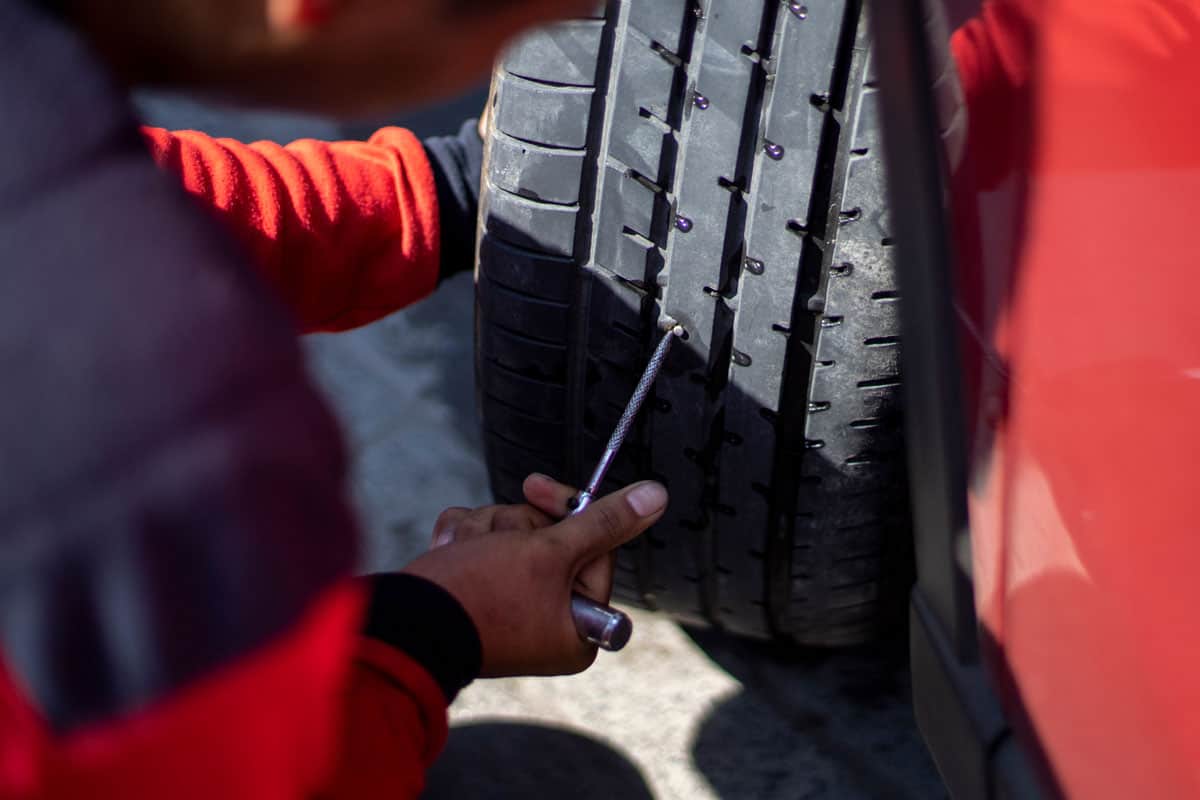
Large punctures, slashes, or damage to the inner sidewall will also require a tire replacement. The angle of the puncture may also cause your mechanic to recommend replacement. Consult your vehicle's manual, as some makes and models require you to replace your tires in pairs or all four at once.
What Causes A Tire Blowout?
An improper repair or unrepaired puncture can lead to a blowout and should be addressed immediately. Other factors that can cause a blowout could be driving on old, worn tires or improperly balanced tires.
Driving on tires that have low pressure for a long period can cause friction. This friction will cause the tire to heat and become brittle. Tires that have lost their elasticity can be prone to a blowout. It is important to perform regular maintenance and inspection to avoid dangerous conditions on the road.
For more on avoiding a tire blowout read our article RV Tire Blowout: What to Do When It Happens (And How to Avoid It)
What Should You Do If Your Tire Blows Out?
If your tire does blow out while you are on the road, do not immediately step on the brake. Calmly accelerate slowly while keeping the car as straight as possible.
Turn your emergency lights on and remove your foot from the accelerator to start lowering your speed. As soon as it's safe, move over to the right shoulder of the road. Call for roadside assistance or if you have the tools and knowledge replace your tire with your spare and drive your vehicle to the nearest mechanic.
Final Thoughts
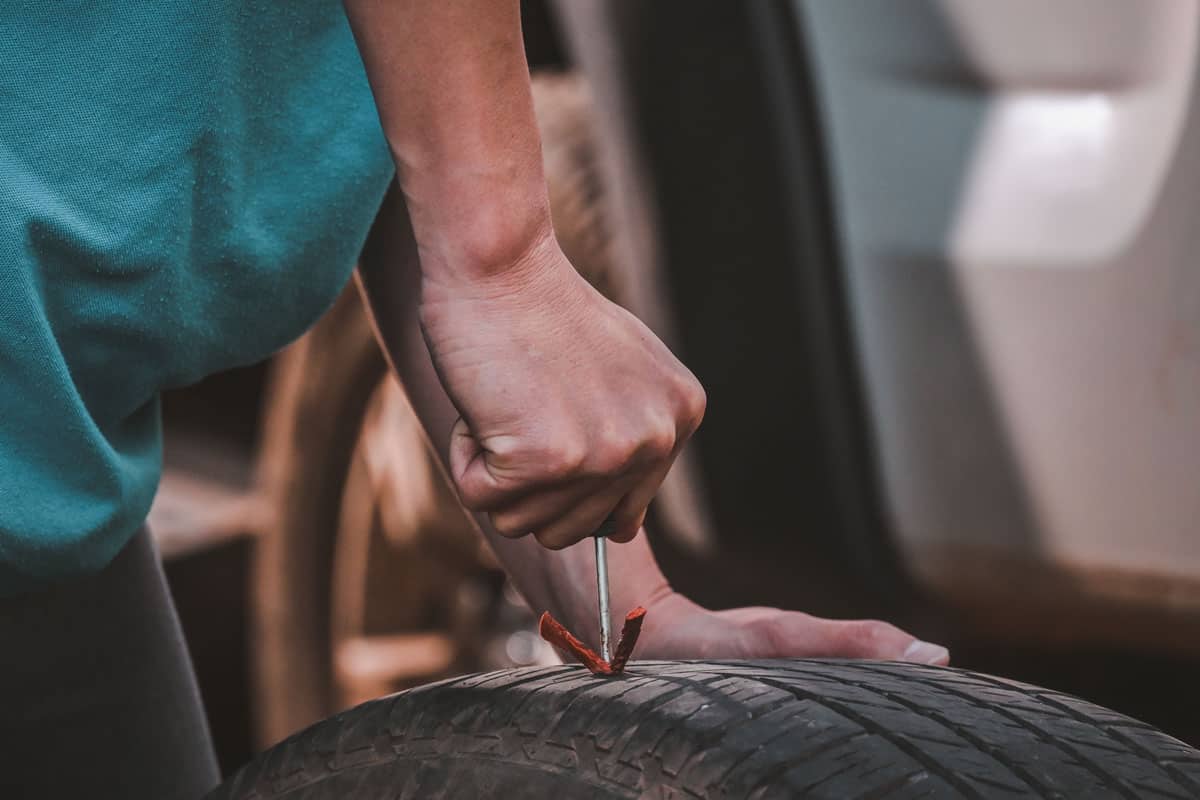
Now that you know whether a patched tire can blowout out and how the repair needs to be done, keep your vehicle on a regular maintenance schedule. With the right care and maintenance, you can drive on a patched tire for years. When in doubt, replace a suspect tire to ensure your safety and the safety of those in transit with you.
Made it to the end? You may also be interested in the following:


